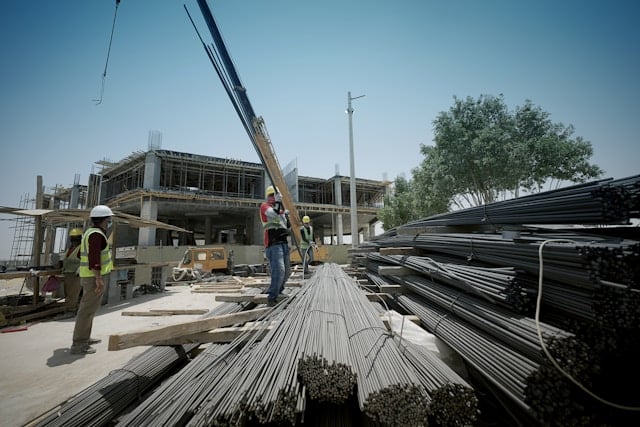What Are the Latest Trends in Sustainable Urban Planning for New Real Estate Projects?

Urban development is continuously evolving, and in recent years, the focus has shifted towards sustainability. The creation of sustainable cities has become paramount, with real estate developers taking on the mantle of incorporating green and smart technologies in their construction projects. We are no longer creating buildings; we’re molding the future of urban living. This article will delve into the latest trends in sustainable urban planning for new real estate projects.
Embracing the Concept of Green Buildings
Green Buildings are no longer a novelty but a necessity. They are an embodiment of energy efficiency and sustainability, two factors critical to 21st-century urban development.
Lire également : How Can Real Estate Investors Benefit from Opportunity Zones in the UK?
A green building, or a green construction project, is an approach that’s sensitive to the environment. Its design, construction, and operation ensure that the energy consumption is efficient and the impact on the environment is minimal. These types of buildings often resort to renewable energy sources like solar and wind energy, thereby reducing dependence on non-renewable resources.
In recent times, developers have been keen on achieving the Leadership in Energy and Environmental Design (LEED) certification, which is an internationally recognized green building certification system. It provides a framework for healthy, highly efficient, and cost-saving green buildings.
Cela peut vous intéresser : What Are the Key Considerations When Planning for High-Density Residential Developments?
Integrating Smart Technologies in Urban Planning
The cities of the future will not only be green but also smart. Urban planning now includes the integration of smart technologies. These technologies do not only increase the comfort and convenience of the inhabitants, but they also ensure efficient energy usage and contribute to the overall sustainability of the city.
Smart technologies in urban planning include the use of advanced building materials, smart meters for efficient utility management, intelligent transport systems, and digital platforms for city management. For instance, smart meters monitor energy usage in real time, allowing for more efficient energy usage. Intelligent transport systems, on the other hand, improve traffic flow, reduce congestion, and lower emissions.
The Growth of Mixed-Use Developments
The concept of mixed-use developments is one that is gaining popularity in sustainable urban planning. It essentially involves combining residential, commercial, and institutional, or other use into one development.
This model fosters a sense of community, reduces the reliance on automobiles, and promotes walkability. Imagine having your office, grocery store, school, park, and your favorite restaurant all within walking distance! Not only does this reduce carbon emissions, but it also promotes healthier lifestyles and creates vibrant, socially inclusive communities.
Water-Sensitive Urban Design
Water is a critical resource, and its management is an essential aspect of sustainable urban planning. Water-sensitive urban design (WSUD) is an approach that integrates the urban water cycle, including stormwater, groundwater, and wastewater management, and water supply, into urban design to minimize environmental degradation and improve aesthetic and recreational appeal.
Developers are now increasingly adopting WSUD in their projects. The use of permeable pavements, green roofs, and rain gardens are just some of the ways through which this approach is being implemented.
Focus on Urban Renewal and Retrofitting
Lastly, sustainable urban planning is not just about new projects but also about upgrading existing ones. Urban renewal and retrofitting involve taking existing buildings and upgrading them to meet current sustainability standards.
This might involve enhancing energy efficiency, improving water management, or integrating smart technologies. The goal here is to improve the urban environment without necessarily having to start from scratch.
As we continue to grapple with the challenges posed by urbanization and climate change, adopting sustainable practices in urban planning is no longer an option but a necessity. The future of real estate lies in sustainability, and developers are keen to adapt to these trends to ensure that our cities are not only habitable today but also sustainable for future generations.
Implementing Building Codes for Sustainable Development
Building codes play a crucial role in shaping real estate and urban development. Recently, these codes have seen a shift towards sustainable development, which means they now emphasize energy efficiency, reduced energy consumption, and minimal environmental impact. These codes are being implemented not only in the United States but are also becoming a global standard.
Such codes ensure that real estate developers adhere to certain standards before, during, and after construction. This practice makes sure that buildings are designed, built, and operated in an energy-efficient and environmentally responsible manner. Moreover, the implementation of these codes encourages the use of renewable energy sources and the reduction of greenhouse gas emissions.
For example, zero-energy buildings (ZEBs) and passive houses that utilize renewable energy sources to achieve zero or near-zero energy consumption are becoming more prevalent in various parts of the world. These buildings are designed and constructed to utilize natural resources such as sunlight and wind to the maximum extent possible, thereby reducing reliance on non-renewable energy sources.
Furthermore, building codes encourage the reduction of waste during construction. This implies promoting the reuse and recycling of construction materials, thus minimizing the environmental impact.
Overall, building codes serve as a roadmap for sustainable real estate and urban development, steering both towards a more eco-friendly and sustainable future.
The Rise of Smart Cities
In the era of rapid urbanization and technological advancement, the concept of ‘smart cities’ is emerging as a solution to many urban challenges. A smart city uses technology and data to enhance the quality of life, improve sustainability, and streamline urban services.
A smart city’s foundation lies in its robust digital infrastructure, which enables real-time monitoring and control of city operations. This includes everything from traffic management to waste disposal, energy consumption, and even crime prevention.
For instance, smart grids allow for better energy management, reducing energy consumption and the associated carbon emissions. Similarly, intelligent transport systems leverage data and connectivity to optimize routes, reduce traffic congestion, and boost public transport efficiency.
Moreover, smart cities prioritize sustainability. This is evident in their push for green buildings, renewable energy sources, efficient waste management systems, and sustainable urban planning.
In conclusion, the rise of smart cities signifies a promising trend in urban development, with technology and sustainability at its core.
Conclusion
The landscape of real estate development and urban planning is undergoing a significant transformation, with sustainability at its helm. From the adoption of green building concepts to the integration of smart technologies and emphasis on mixed developments, the focus is on creating urban environments that are not only comfortable and convenient for residents but also have minimal adverse effects on the environment.
Moreover, the implementation of building codes geared towards sustainable development and the growth of smart cities underscore the shift towards a more sustainable future. These advancements signal the real estate industry’s commitment to combatting climate change and creating resilient cities.
The future of urban development lies in the hands of developers, policymakers, and residents alike. With collaborative efforts and a shared vision, we can create sustainable urban landscapes that are not only conducive to today’s lifestyle but also future-ready, offering a balanced blend of comfort, convenience, and sustainability. Therefore, the evolution of urban planning signifies our stride towards a greener future.
